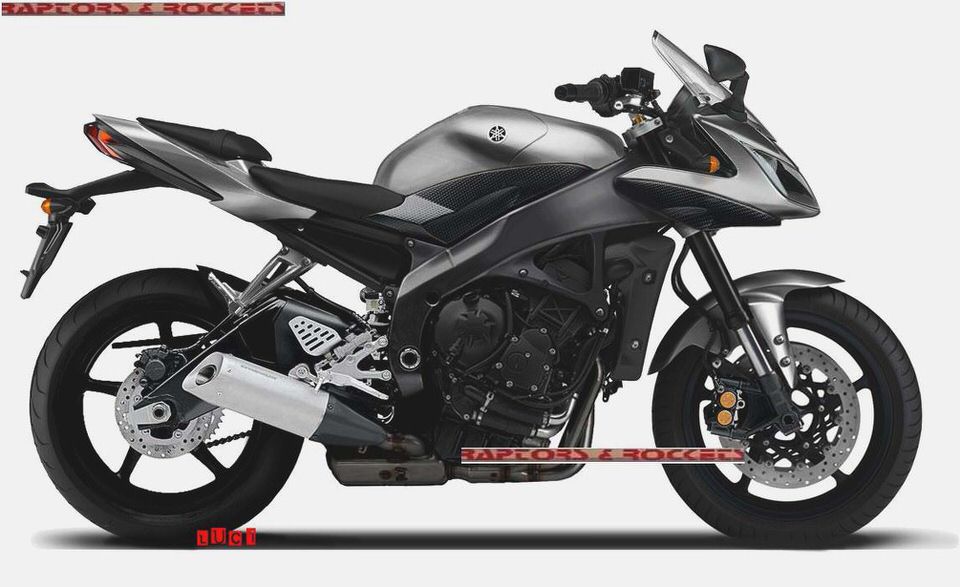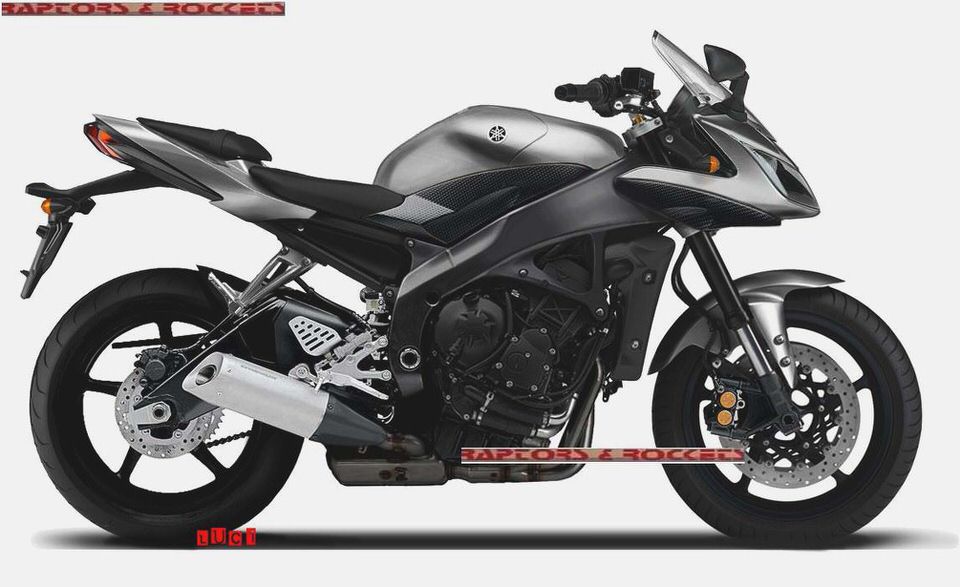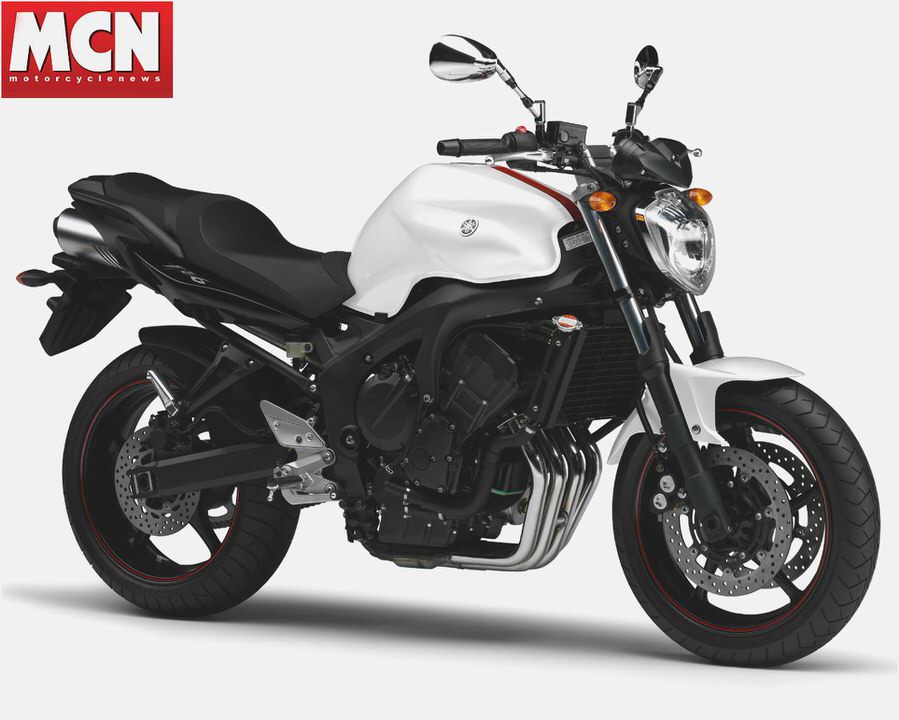

2009 Yamaha FZ6R First Ride
It’s hard not to get discouraged these days. Times are tough – turn on any news channel and it’s all we hear. The credit bubble has completely burst and we are paying the price with an economy that hasn’t looked this bad since knickers and wingtips were in style. Credit-dependent industries, like the motorcycle market, have taken a big hit (unless it’s scooters and dual-purpose bikes, that is).
Now more than ever consumers are putting their pocketbook over outright performance when it comes to buying a new machine.
’09 Yamaha FZ6R: Sporting performance from an economical package?
But why can’t we have both? This is exactly what Yamaha aims to achieve with their new FZ6R. Let’s call it PPP (Penny Pinching Performance).
Thus, we thoroughly hammered on the new machine to bring you the real scoop.
Do you actually get more bang from the buck, or does the adage ‘you get what you pay for’ hold true here? Let’s find out.
Internals Exposed
In an effort to over-achieve and prove one can in fact get more than they pay for, Yamaha started at the heart of the FZ looking for improved real-world rideability. Engine lineage trickles down from the R6 of yesteryear, but aimed at improved low-end and mid-range to “meet the demands of today’s sport riders.”
A larger volume airbox feeds clean air into fuel from four 32mm Mikuni throttle bodies. An improved intake tract has been designed to optimize flow and improve air/fuel mixture, while a 32-bit ECU controls the four-hole, two-direction, high-dynamic-range type fuel injectors. Revised cam timing reduces lift and duration, which causes a loss of top-end power but thickens up the mid-range.
2009 Yamaha FZ6R.
Ceramic composite liners sit in each cylinder for improved wear resistance and reduced friction, while new forged aluminum lightweight pistons reduce weight and add strength, allowing the engine to rev to a screaming 10,000 rpm. Bore and stroke resides at 65.5 x 44.5mm, while the transmission is a six-speed close-ratio unit with a new clutch pull system similar to that of the R6, using a pushrod as opposed to the old ball-joint.
Spent gasses are exited via a new 4-2-1 exhaust system which features a 3-way catalytic converter to meet the ever-inflating government emissions standards (thank you Uncle Sam). The new system exits under the rider’s right foot, MotoGP-style, via a large square housing. This is designed to keep mass as close to the CG (Center of Gravity) as possible, and also fits the “aimed to improve low- to mid-range power” theme Yamaha has emphasized with this new bike.
All-new styling features angular lines, with the rear end matching the sharp lines of the front.
Chassis-wise the 6R sees a redesigned steel tubular frame which uses the engine as a stressed member, as well as a simple, square steel swingarm. Rake now sits at 26 degrees with a trail of 103.5mm. Suspension is handled via a SOQI 41mm fork up front and SOQI shock out back. No surprise there, as SOQI is Yamaha’s in-house suspension company.
The fork is not adjustable, while the shock has a seven-step ramp-style preload adjuster.
On the other hand, far more adjustable are the handlebar and seat height. Up front the bar can be set in two positions 20mm apart from each other, while the seat is also a two-position system with options 20mm higher and lower. Wheels are 17-inch by 3.5 inches wide in the front and 4.5 inches wide out back, coming shod with either Bridgestone or Dunlop rubber.
Standard Brembo master cylinders grace both ends of the machine, the front feeding two 298mm disks that are pinched by dual-piston Akebono calipers with a single-piston Nissin grabbing a 245mm disk in the rear. Rounding out the changes is an FZ1-inspired gauge cluster with a digital speedo and analog tach, as well as all the other essential info needed to keep any level rider informed.
The best part? All this comes in at a starting price under 7K ($6,990 for the Raven Black; the Yellow, White and Racing Blue options are $7,090). That’s a lot of bang for not a lot of buck and bikes are currently being shipped to dealers as you read this.
So what is it like to ride?
The Goods
Throw a leg over the low 30.9-inch seat height, twist the key, thumb the starter and the little guy comes to life with a docile and subdued whine. Government regulations haven’t done anything to help motorcycle sound, thus it isn’t until it’s dropped in gear and rolling away that the soundtrack livens up.

Beautiful Northern California played host for the first ride and provided amazing roads.
For our first taste of the new econo-friendly ride, Yamaha invited us up to utterly beautiful Santa Rosa, California, in the heart of wine country, to drink in some of the finest roads North America has to offer. Sunny skies graced us for the day of testing, though temperatures in the low 50s and high 40s made for some frozen extremities
Despite the chilled internals, the new machined proved a formidable opponent for any twisty road one could put in its path, quickly taking our mind off the weather as the speed increased. A lack of suspension adjustment and low footpegs limited the pace some, but for those new to the sport finding those relatively high limits will take time. On the other hand, Yamaha hit the nail on the head with the adjustability of the seat and handlebars, something that will benefit beginners far more than adjustable suspension.
Even at a short 5’6, I found the low seat position to be cramped, with the 20mm higher option feeling far better. This low height will bode well for new and shorter riders, as getting both feet on the ground will aid confidence substantially. Adding a few steps of preload out back helped reduced pumping on corner exit and stabilized the machine. We ended two off from full-hard and could have even gone one step stiffer to help further.
All of the above mentioned adjustments (seat, suspension, bars) can be done quite easily with tools provided in the under-seat tool kit.
You can’t tell, but it was about 30 degrees when this photo was taken. Good thing performance from the little Yamaha helped heat things up.
Feeling slightly slower than the standard FZ6, the tweaked older generation R6 powerplant left something to be desired. While the added mid-range will help newer riders and the impeccable fuel injection makes for worry-free application of the throttle at any rpm, the feel is very electric and lacks character. Not much goes on sub-5,000 rpm, at which time it climes smooth and seamlessly to the 10,000 rpm redline; the problem being it’s a bit too smooth.
On the plus side, it does have enough mid-range snap to keep those wheeliers happy, as a quick twist of the right wrist in first gear lofts the front end to the sky without problem. The high bars and ample feel of the rear brake allow for easy continuation of said wheelies (though, um, we only recommend these actions on a closed course, of course…).
Clutch action is improved. Pull is effortless and feel from the lever is up to par with its more expensive siblings. Reminding me much of the ’01 R6 I raced a few times ‘back in the day’, the transmission has that same smooth and buttery feel when shifting. Tossing the foot lever from gear to gear is nearly effortless, making for extremely easy and pain-free shifts in both directions.
A trade off of this silky action is a bit of feel, as the machine never makes a solid clunk or notch to let you know you are fully into the next gear, though 99% of the time you are without problem. I did hit a couple false neutrals during the day possibly due to this, both times between fourth and fifth gear.
Brakes are more than up to snuff for the lightweight machine and one of its shining points, as are the ergonomics. A rated 43mpg will also no doubt be a solid selling point in these tough economical times.
But the key selling point – the one which Yamaha’s extensive research says young American consumers put above all the rest – an aesthetically pleasing, racing-inspired full fairing. Generation ‘Y’ has spoken and Yamaha have once again answered the call with the 09 FZ6R, providing a formidable option at a very reasonable price.


- 2008 Yamaha YZF-R6S motorcycle review @ Top Speed
- 2010 Yamaha FZ1 motorcycle review @ Top Speed
- YAMAHA XJ6 Diversion F 2009 – Present
- Yamaha C3 – Performance Followup Loobin’ the Tubes
- Launch: 2013 Yamaha YZF-R15 – Motorbikes Reviews, News & Advice – bikepoint…

